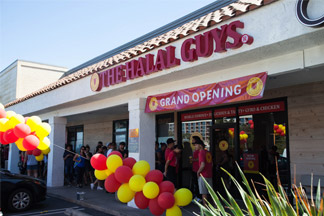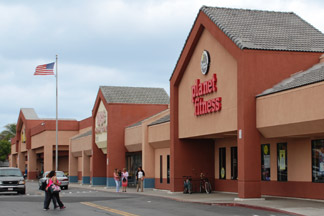
We enter 2016 hopeful that the consumption of retail goods and services will continue to be strong in the coming year, but also very aware that the way in which consumers consume remains nontraditional and will demand ongoing creativity and reinvention in 2016.
Our regional market continues to see neighborhood shopping centers thrive with local eateries and community-serving services. Grocery-anchored centers remain stable, needs-based centers despite the instability of select grocers. And malls and power centers have reemerged thanks to the incorporation of non-traditional anchors and varied entertainment options.
For the third-consecutive year, service and restaurant categories significantly outpaced traditional retail in terms of shopping center leasing. Based on Coreland’s five-million-square-foot listing portfolio of Southern California neighborhood shopping centers, leases signed with restaurant tenants accounted for 41% of all deals in 2015. Service providers accounted for 27%.
 The growth of the restaurant and service categories has somewhat ‘filled the gap’ resulting from the slower growth and expansion efforts of traditional retailers (i.e. soft goods, hard goods and electronics). While the strongest retailers are experiencing more robust sales, it’s the ongoing mergers, consolidations and ‘right-sizing’ efforts that continue to off-set positive growth in this category. Look no further than the recent store closing announcement by Macy’s, which is shedding excess space in order to further strengthen its online marketplace.
The growth of the restaurant and service categories has somewhat ‘filled the gap’ resulting from the slower growth and expansion efforts of traditional retailers (i.e. soft goods, hard goods and electronics). While the strongest retailers are experiencing more robust sales, it’s the ongoing mergers, consolidations and ‘right-sizing’ efforts that continue to off-set positive growth in this category. Look no further than the recent store closing announcement by Macy’s, which is shedding excess space in order to further strengthen its online marketplace.
However, this new normal and the rapidly changing consumer marketplace pose some concerns for 2016. Just how many restaurants can Southern California urban and suburban neighborhoods support to off-set traditional retail? Will gyms, cinemas and other entertainment deals continue to pencil for tenants and landlords alike? What factors will have to be in place this year to see growth in our regional commercial real estate market?
Creativity and reinvention will be a driving force.
It seems that a new restaurant is popping up on every corner, but the fast casual industry is also constantly evolving. There are a number of national concepts taking big risks and making fundamental changes that will mean aggressive growth and change for some local and national fast casual concepts. Dunkin’ Donuts, Halal Guys, Dickey’s Barbeque to name a few.
 Gyms and varied entertainment options have proven to be viable additions to neighborhood centers, power centers and malls. With size requirements ranging from 10,000 to 80,000 square feet, they fill a definite need. However, the challenge remains that they require significant tenant improvement dollars. It’s a difficult pill to swallow for most landlords, but the fact remains that they drive traffic and have proven to be worth the investment in most markets.
Gyms and varied entertainment options have proven to be viable additions to neighborhood centers, power centers and malls. With size requirements ranging from 10,000 to 80,000 square feet, they fill a definite need. However, the challenge remains that they require significant tenant improvement dollars. It’s a difficult pill to swallow for most landlords, but the fact remains that they drive traffic and have proven to be worth the investment in most markets.
New construction will remain modest this year as retailers remain cautious about stepping up to pay the rents necessary to support ground-up and major redevelopment. This leaves landlords and tenants having to figure out who carries the greater responsibility in tenant improvement efforts of existing buildings.
Location, location, location is a must for growing retailers… but the boundaries have expanded. Activity is back in secondary and tertiary markets, primarily in centers positioned on Main-and-Main. Whether you are in a coastal market or tertiary market one thing remains the same, tenants are competing for the best visibility, access and signage.
We expect the ‘locally-sourced’ and ‘home-grown’ trends of 2015 to carry into 2016 as owners continue to find value in taking a chance with new retailers and restaurants that create buzz and better serve trade areas. There is still a place for a great experience that meets the need of the trade area. Finding the ideal combination to facilitate a salon appointment, coupled with last-minute groceries and a coffee is still the primary driver of growth.

